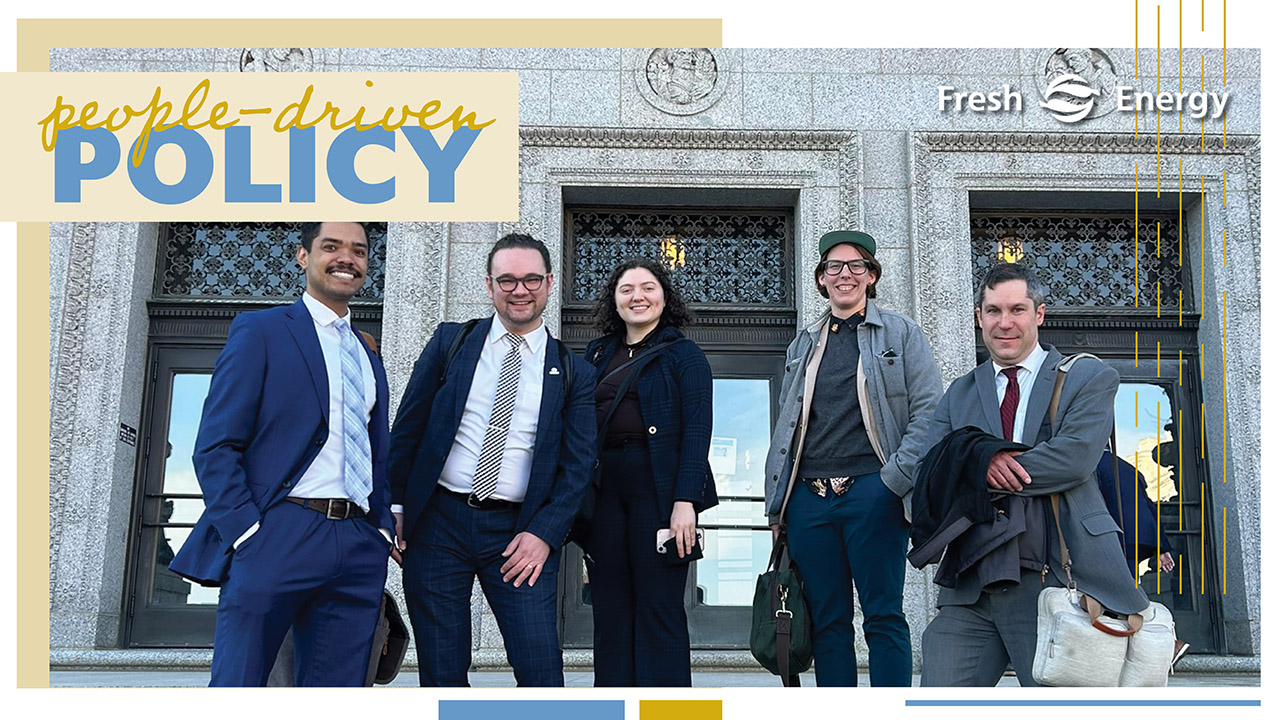
In July 2020, Minnesota’s electric and natural gas investor-owned utilities (including Xcel Energy, Minnesota Power, and more) filed their latest round of Conservation Improvement Program (CIP) Triennial Plans, which lay out the utilities’ energy efficiency programs over a three-year period starting in 2021. These plans have been the building blocks of Minnesota’s longstanding national leadership on energy efficiency.
However, while Minnesota’s investor-owned utilities have generally exceeded their energy savings goals in recent years, energy efficiency programs aren’t equitably serving the Minnesotans who stand to benefit most. And although Minnesota law requires utilities to spend a minimum amount on programs serving under-resourced (also known as “low-income”) customers, that threshold falls short of the actual need in this area: in 2019, for example, Xcel Energy met its spending requirements in the “low-income” segment, but those programs constituted just 8.9% (electric) and 17.3% (natural gas) of its total “low-income” plus residential spending, and 1.2% (electric) and 2.5% (natural gas) of its total “low-income” plus residential energy savings, even though 24% of Minnesota households are “low-income.” In other words, the dollars spent and energy savings achieved are not proportional to the number of residential households who are actually under-resourced. Fortunately, there’s still time for Xcel and other investor-owned utilities to amend their CIP plans to better reflect the unmet need in this area.
Together with our Energy Efficiency for All (EEFA) partners at the National Housing Trust, and Natural Resources Defense Council, Fresh Energy filed comments on the CIP Triennial Plans from Xcel Energy, CenterPoint Energy, Minnesota Power, Minnesota Energy Resources Corporation (MERC), and Otter Tail Power, pushing for changes to each utility’s plan in order to better reach, and more equitably serve, under-resourced households throughout the state.
Here are our five key recommendations:
1. Align spending and savings goals with demonstrated potential.
The recent Minnesota Energy Efficiency Potential Study laid out a roadmap for the amount of energy savings that could reasonably be achieved in Minnesota over the next 10 years. However, while the Potential Study found that significant energy efficiency opportunities remain in under-resourced households statewide, the utilities’ plans as proposed capture just a fraction of that potential—in some cases, proposing to achieve just 5% of the potential energy savings in the “low-income” sector. It will be critical for utilities to right-size their spending and savings goals now, in order to meet these programs’ full potential over the next decade.
2. Create robust, holistic programs to serve multifamily buildings.
Multifamily buildings are a unique type of housing stock, and need dedicated programs to unlock the full range of savings opportunities for building owners and renters. Our Minnesota Multifamily Affordable Housing Energy Network (MMAHEN) members were glad to provide recommendations and feedback to Xcel and CenterPoint in the development of their Multi-Family Building Efficiency Program, and in recent years we have also appreciated the opportunity to engage with MERC on their Multi-Family Direct Install program. In this cycle, Minnesota Power has for the first time proposed a dedicated multifamily program as well. We commend the utilities for these efforts and look forward to future collaboration to better serve multifamily buildings in the years to come.
3. Explore partnership opportunities.
As the Xcel/CenterPoint Multi-Family Building Efficiency program has shown, utility partnerships are critical to developing successful programs, especially those serving the multifamily sector. Additional partnerships have emerged with other utilities, such as Dakota Electric and Minnesota Power coordinating with MERC’s multifamily program, and Minnesota Power completing projects with MERC, CenterPoint, and Comfort Systems in Duluth. These partnerships reduce administrative burdens for utilities, reach more customers, and create an enhanced participation experience and increased savings for customers.
4. Leverage relationships in the housing sector.
Since major renovation and rehabilitation projects happen infrequently in multifamily buildings, it is essential to engage building owners when they are considering those projects to maximize savings opportunities. Minnesota Housing’s funding programs, including its Multifamily Rental Housing Common Application and Publicly Owned Housing Program, can help identify potential projects for the utilities’ energy efficiency programs.
5. Continue pursuing workforce diversity efforts through CIP programs.
Several utilities have developed substantial goals for diversifying their own workforce and achieving certain spending levels with Black, Indigenous, and People of Color (BIPOC) and women-owned businesses. With increased focus on this topic in Minnesota, including the work of the recent Energy Utility Diversity Group (EUDG), we applaud the utilities for their efforts to date and encourage them to continue aggressively pursuing these goals through their CIP programs, helping to create jobs and spur economic development for more Minnesotans.
The Triennial review process will continue into the Fall, with final approval expected before the end of the year. Fresh Energy will stay engaged on all of these dockets and remain a vocal advocate for maximizing savings for under-resourced households and multifamily buildings across the state. Stay tuned for future updates.
If you want to review these dockets in more detail, click the links below for each of the utilities’ dockets, including their Triennial Plan and our comments.
- Xcel Energy (Docket No. 20-473)
- CenterPoint Energy (Docket No. 20-478)
- Minnesota Power (Docket No. 20-476)
- MERC (Docket No. 20-479)
- Otter Tail Power (Docket No. 20-475)

